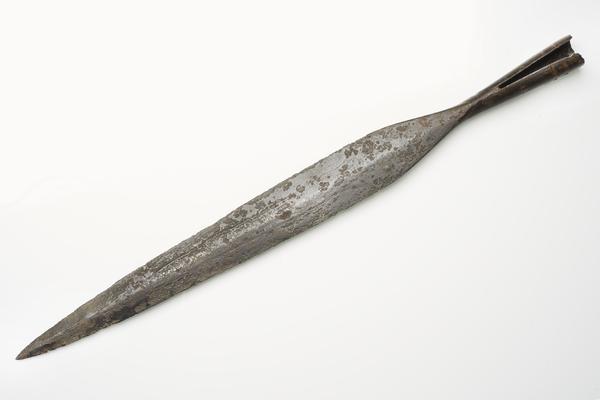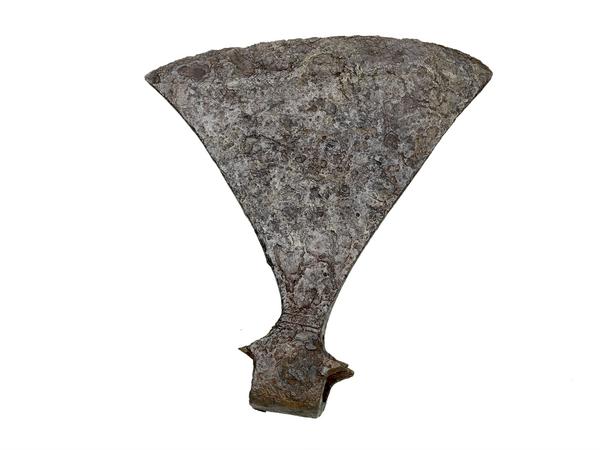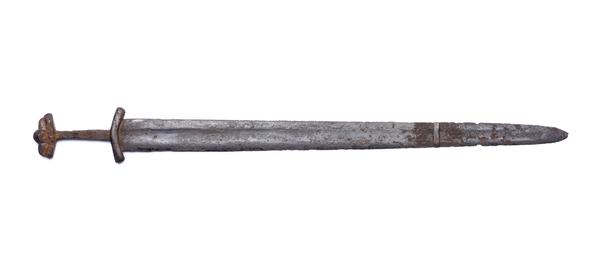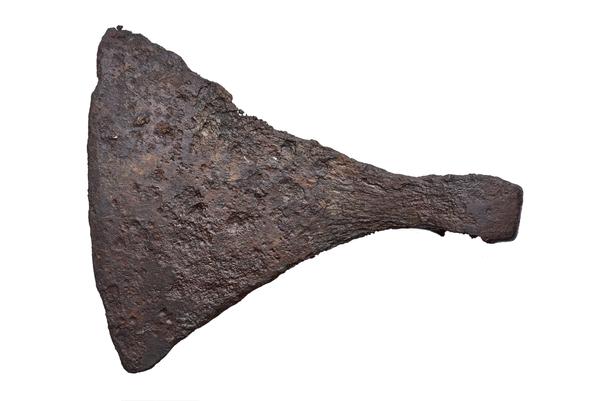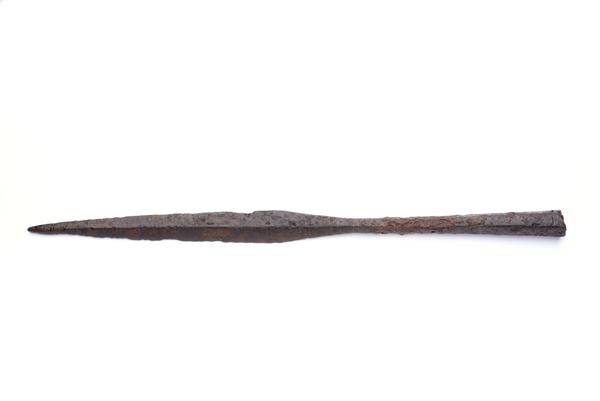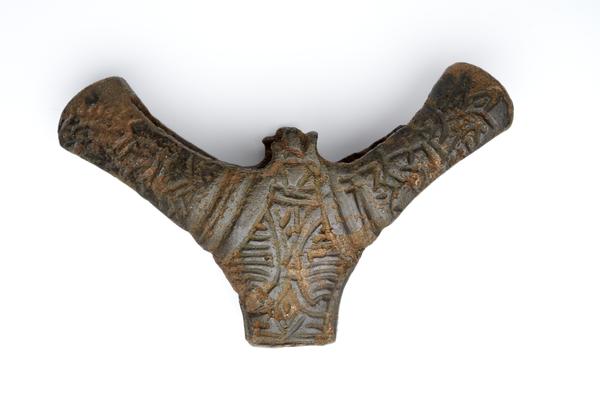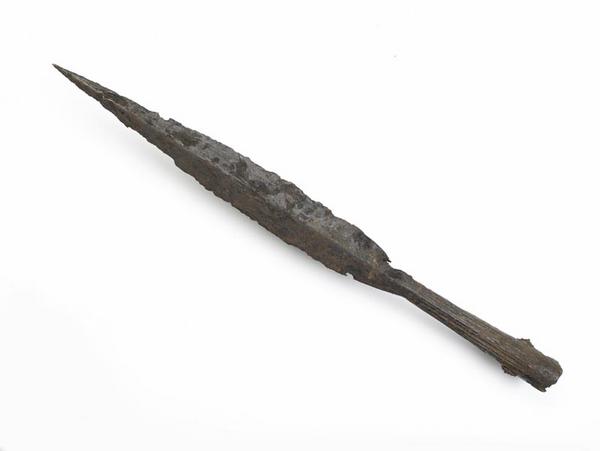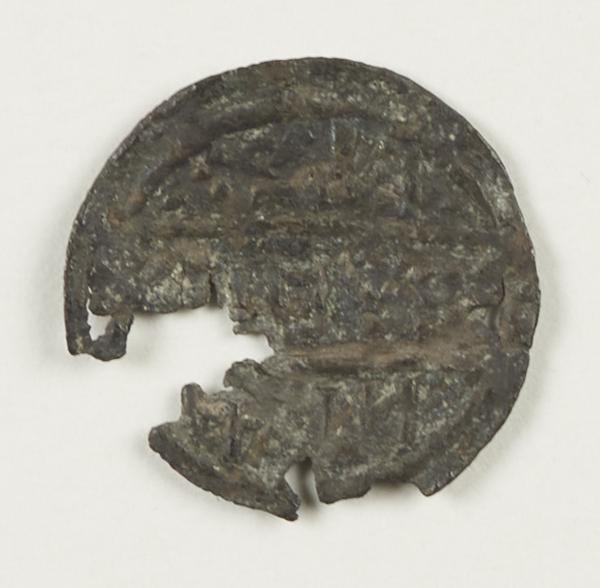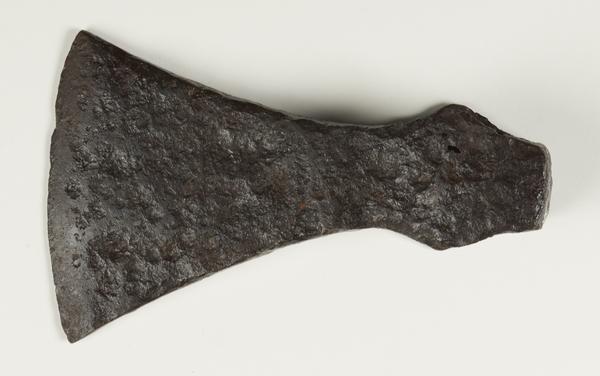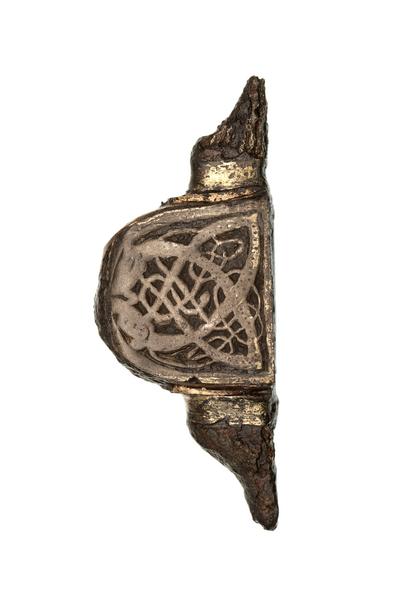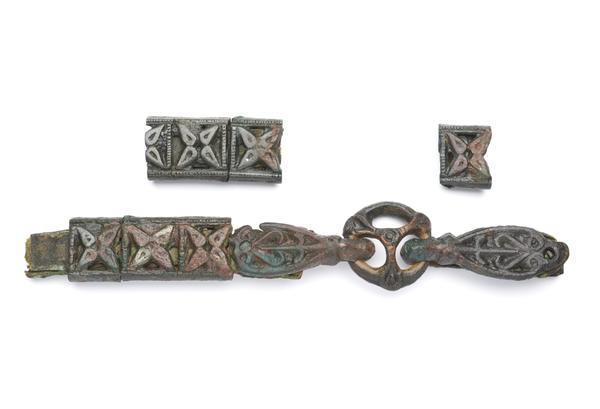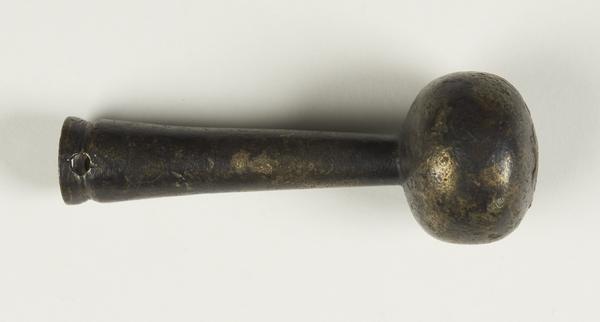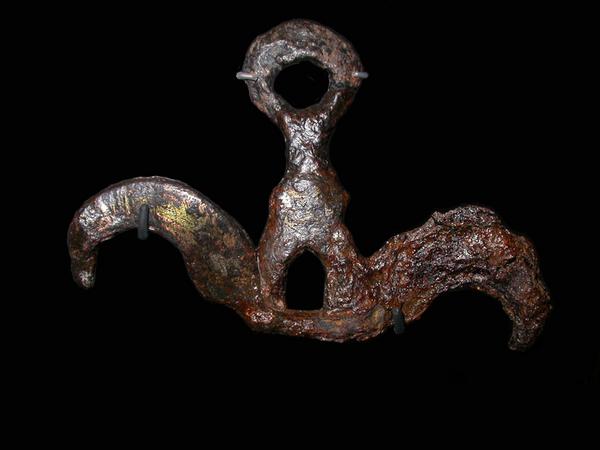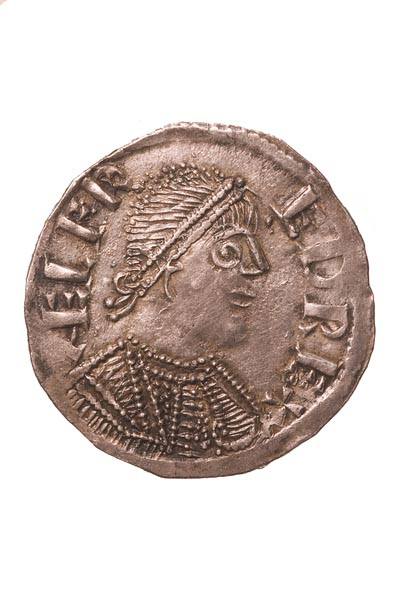Vikings in London
As raiders, traders, conquerors and short-lived rulers, Vikings from Scandinavia left a long-lasting impression on early medieval London.
City of London
842–1042 CE
A Scandinavian invasion
Before the famous Norman invasion of 1066, London wrestled with another threat from across the sea. For 200 years, Vikings from Scandinavia sailed their longboats to England to steal, trade, conquer or settle.
In 886 CE, the Saxon King Alfred chose London as a key fortified town in his fightback against the Vikings – a pivotal event in the rise of the city.
The power struggle raged on, and London was the scene of furious battles. In 1016, a Viking named Cnut became king of England. His family reigned for 25 years.
Our collection contains a variety of battle-scarred and beautiful Viking objects. They tell this gripping story – of a rich new culture arriving in a torrent of violence.
Who were the Vikings?
The Vikings were sea raiders from Scandinavia who began plundering coastal towns and monasteries in northern Europe around the end of the 700s CE. At first, they came in the summer, killing and terrorising as they stole silver, gold and people to enslave.
With the help of the River Thames, some of the raiders made their way inland to London. Vikings also began to settle in large parts of England and Scotland.
People in England called them all Danes, but the different Viking groups who came here were from Sweden and Norway as well as Denmark.
The first Viking raids on London
London suffered its first Viking raid in the summer of 842 CE. It was described as “a great slaughter” by early medieval historians. Another raid occurred in 851, when 350 ships carried Vikings to raid London and Canterbury, in Kent.
During these first raids, the main London settlement was Lundenwic. Lundenwic was a thriving trading town on the Strand, west of the Roman walled city which at that time lay abandoned.
From 865, a Viking army began conquering northern and eastern England. Scandinavian settlers followed, making their homes in the conquered lands, which became known as the Danelaw.
In the winter of 871–872, an army camped in London, although we’re not certain exactly where. In 878, a different fleet camped through the winter in Fulham, south-west London.
“London’s fortifications made it a crucial base of resistance against the Vikings”
Lundenburgh: Alfred’s new town
Lundenwic was abandoned during the turbulence and conflict of the late 800s CE. The area within the Roman walls became London’s heart once again, in part thanks to King Alfred.
Alfred was the ruler of Wessex, the only English kingdom that hadn’t submitted to Viking conquest. He fought back, pushing the Vikings out of southern and western England, and occupying London as he went. A silver penny in our collection from around 880 features Alfred and the medieval Latin name for London: “LVNDONIA”.

A silver penny featuring Alfred.
The Anglo-Saxon Chronicle – a key source from this period – tells us that in 886 CE, Alfred reestablished London within the Roman walls. Its fortifications made it a crucial base of resistance against the Vikings.
The restored city was known as Lundenburgh. At first it only stretched as far north as Cheapside, but it soon grew in size and importance.
Southwark, south of the river, was established as another ‘burgh’ – the Old English word for a walled town – to help defend London.
The Viking raids resumed a century later
London was attacked in 994 CE, then time and time again over the next 20 years.
Battles to defend London were fought along the riverside. Our collection includes a range of weapons from this period that have been discovered along the Thames by mudlarks. This assortment of fearsome Viking axes, swords and spears may have been lost in battle.
London’s only bridge, built at some time around 1000, was well defended by warriors. During a siege in 1016, the Viking Cnut was forced to dig a canal for his fleet to bypass the bridge.
In the face of Viking raids, the early medieval Londoners often paid the Vikings a tax called a ‘Danegeld’ to stop them attacking.
King Cnut
One result of the fighting was that the Danish king Cnut was accepted as the king of England in 1016. We think that Cnut might have been the first king of England to base himself in Westminster.
In 1018, he taxed London 10,500 pounds in silver. The kingdom as a whole was taxed 72,000 pounds, showing that London was the largest, wealthiest town in England at this time.
Cnut’s family ruled England, including London, for the next 25 years. One of Cnut’s sons, Harold, was the first king of England to be buried at Westminster Abbey.
Scandinavia became a strong influence on England’s law, language, culture and art. London was connected to the Vikings’ vast international trade network, which included Greenland, Iceland, Russia and, via the ancient Silk Road trade route, Asia.
A silver Iranian coin found on the Thames foreshore in Wandsworth, again by a mudlark, is thought to be one amazing example of this far-reaching movement of goods.
One of the best Viking objects in our collection comes from this period. It’s a gravestone, carved in a Scandinavian style to show a large beast fighting a serpent. Runes in Old Norse carved into the stone tell us “Ginna and Toki had this stone laid”.
The stone is evidence that Scandinavians formed part of the elite in London at this time. It shows that there were wealthy people here who could pay for such a well-made object. And that there were skilled craftspeople here who had an advanced understanding of Scandinavian art.
The Vikings’ influence didn’t end with Cnut
Cnut’s dynasty ended in 1042 when his son King Harthacnut died, possibly from poisoning, during a wedding feast in Lambeth. The English king Edward the Confessor replaced him on the throne.
Many of those Scandinavians who’d settled remained in London, their way of life continuing to merge into a shared culture. People with Scandinavian heritage held positions of power within London. Scandinavian names became more common. Religious and artistic ideas spread.
Several churches were built for the Norwegian king St Olaf, or St Olave, who allied himself with the English king Ethelred the Unready. It’s thought that St Olave’s Church on Hart Street, in the City of London, was first built around 1050.
The Vikings and 1066
In 1066, Vikings led by Harold Hardrada attempted one last invasion in the north of England. The defence was led by the earl of Wessex Harold Godwine, the son of a West Saxon father and Danish mother.
Godwine fought off Hardrada’s invasion, only to then be defeated by William the Conqueror at the Battle of Hastings a month later. This invasion by Normans from the north of France marked the start of a new era for London.




